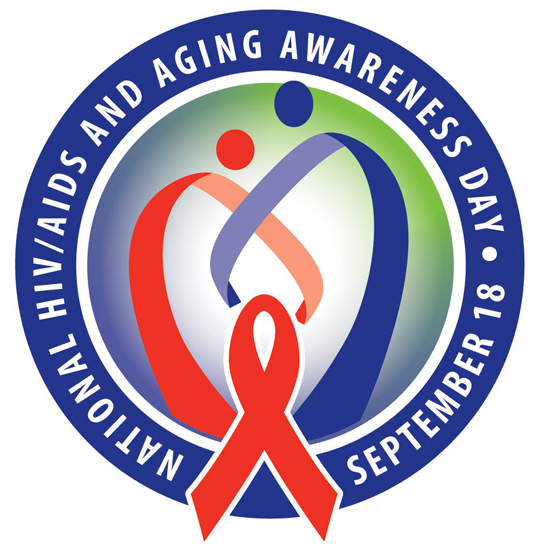Amplifying Communication: National HIV/AIDS and Aging Awareness Day Resources

Observed annually on September 18, and led by the AIDS InstituteExit Disclaimer, National HIV/AIDS and Aging Awareness Day (NHAAD) brings attention to the growing number of people living long and full lives with HIV and to their health and social needs, as well as aging-related challenges of HIV prevention, testing, treatment, and care. The theme for this year’s awareness day is “Aging is a part of life, but HIV doesn’t have to be!” which reminds us that age is not a form of HIV prevention.
In 2019, according to the Centers for Disease Control and Prevention, more than half (52%) of people in the United States and dependent areas with diagnosed HIV were age 50 and older. Additionally, from 2015 through 2019 in the United States and six dependent areas, the number of diagnoses among men who have sex with men who were age 55 and older increased 5% (from 1,635 in 2015 to 1,718 in 2019).
Today, people with HIV are living longer and healthier lives thanks to antiretroviral therapy (ART). ART can lead to achieving and maintaining viral suppression and improving health-related quality of life as this population ages. According to the Ryan White HIV/AIDS Program (RWHAP) in 2019, 90.9% of clients aged 50 years and older receiving RWHAP HIV medical care were virally suppressed, which was slightly higher than the national RWHAP average, (88.1%).
NHAAD is used to bring light to the needs and challenges that the aging population faces regarding HIV and AIDS. It is also an important opportunity to raise awareness on HIV and AIDS and aging and to educate the aging population about the importance of HIV screening, which helps get older adults with HIV into treatment, improving their health outcomes and reducing the potential for the virus to be transmitted to others. As such, NHAAD is a critical part of ending the HIV epidemic in the United States.
Stay informed with these federal- and community-developed communication resources.
Federal Communication Resources
You can find information on NHAAD and HIV prevention, care, and treatment for older adults here:
- Administration for Community Living: HIV/AIDS
- CDC Fact Sheet: HIV and Older Americans
- HIV AIDS Bureau: Optimizing HIV Care for People Aging with HIV
- HIV.gov: Aging with HIV
- HIV.gov: Supporting Long-Term Survivors of HIV
- HIVinfo.NIH.gov: HIV and Older People
- National Institute on Aging: HIV, AIDS, and Older People
At HIV.gov, you can find the NHAAD logo, as well as NHAAD-specific and aging-related resources from federal agencies. Visit our NHAAD page for more information.
Here are a few examples: The National Institute on Aging provides inclusive information and facts about HIV and AIDS and older people. The CDC has provided a fact sheet about HIV and older adults, and HIV.info.NIH.gov provides a Q&A fact sheet on HIV and older people.
Community Resources
The AIDS Institute Exit Disclaimerand the HIV/AIDS and Aging AwarenessExit Disclaimer websites provide facts about the prevalence of HIV among older adults, including a resourceful video to address HIV stigma among older women. You can also sign up to receive their Aging Healthy Resources Newsletter.
You can communicate about NHAAD in a number of ways, while emphasizing that HIV testing, prevention, treatment, and care are all essential throughout your life. NHAAD not only provides us with an opportunity to recognize people who are aging with HIV, but it also highlights a tailored approach to meet the specific needs of older adults.